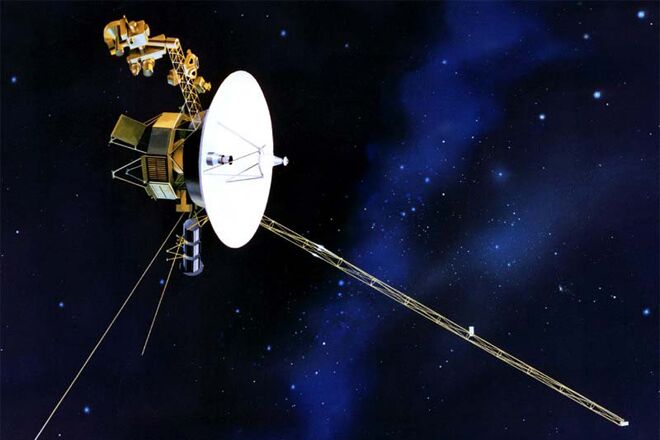
Voyager 1 Sort-of Leaves the Solar System
That headline isn’t quite as grabbing as ones flooding the media. But it’s more accurate. nasa’s Voyager 1 probe has traveled further from the earth than any object built by man. And once again we’re being told it has “left the solar-system.”
By now the headline “First Space Probe Leaves the Solar System” has become familiar. It first ran in 1983, when the Pioneer 10 probe crossed the orbit of Neptune, the outermost planet in the solar system.
Voyager’s latest milestone is a huge event, perhaps even up there with man stepping on the moon. The probe has crossed the biggest and most important milestone that we’ll see for a long time. But the impact is dulled because we keep seeing the headline.
The problem is that there are many different places that you can draw an imagery line and say this marks the edge of the solar system. To make matters worse, sometimes there’s no consensus on exactly when Voyager crossed the line, so you keep seeing the headline “Voyager Leaves the Solar System” each time a different group of scientists decides that the probe has crossed the same line.
So what just happened? On September 12, nasa announced that Voyager had crossed into interstellar space.
Until recently, Voyager has basked in the (relatively) warm wind of particles flung outward by the sun. Now it is surrounded by cold gusts blown out by other stars.
No other object made by man has traveled in this region of space before, and it isn’t behaving the way scientists expected. nasa announced that Voyager crossed into this region of space on Aug. 25, 2012—it took them until now to be sure of what had happened.
As Dr. Ed Stone, who has been Voyager’s project scientist for over 40 years, put it, “The 36-year old probe is now sailing through uncharted waters of a new cosmic sea and it has brought us along for the journey.” For the first time, we’ll be able to directly study the nature of that sea.
But how long will you have to wait to be sure that you’ll never see another headline proclaiming that Voyager has left the solar system ever again?
The answer is pretty astounding: 30,000 years. That’s how long it will take, according to our best guess, until Voyager has passed through the Oort Cloud—a field of rocks, comets and other debris that orbits the sun. But, to be extra sure, you may need to wait another 10,000 years before Voyager passes the final waymark that could be considered the edge of the solar system—the point at which the sun’s gravity is no longer the dominant pull on the probe.
That statistic is at once pathetic and inspiring. nasa estimates that the project consumed one third of the effort that went into the Great Pyramid. Voyager is over 11 billion miles away and traveling faster than almost any other object made by man. Yet it won’t leave our solar system and start heading out to greet the billions of stars in just our own galaxy until roughly a.d 32,100.
That’s man’s best effort at reaching the stars.
By himself, using his own power, mankind is unimaginably insignificant in comparison to the universe. But there is hope for man to realize his dreams of space exploration. The Bible reveals mankind will reach every star out there.
Hebrews 2:8 states that God has put “all things in subjection” under man. The Moffatt Bible translated “all things” as “the universe.” The verse goes on to say that God has left “nothing that is not put under him.”
In his book The Incredible Human Potential, Herbert W Armstrong wrote:
In other words, for those willing to believe what God says, He says that He has decreed the entire universe—with all its galaxies, its countless suns and planets—everything—will be put under man’s subjection.
He points out that the verse goes on to say that “But now we see not yet all things [the endless universe] put under him [man].”
Hebrews 2:8 is not an isolated scripture. The Bible plainly reveals that God’s plan for mankind includes the whole universe.
Voyager reveals the futility of man’s attempt to make this journey on his own. But it also gives a glimpse at sheer vastness of the plan God has for man. It helps us glimpse a vision of God’s future that will excite any imagination that takes few moments to dwell on it.
Our free book The Incredible Human Potential can help you prove for yourself what the Bible says about this vision. And our free, full color, magazine-sized booklet Our Awesome Universe Potential will help bring that vision alive with pictures from some of man’s greatest telescopes and explanations that are beyond inspiring.
